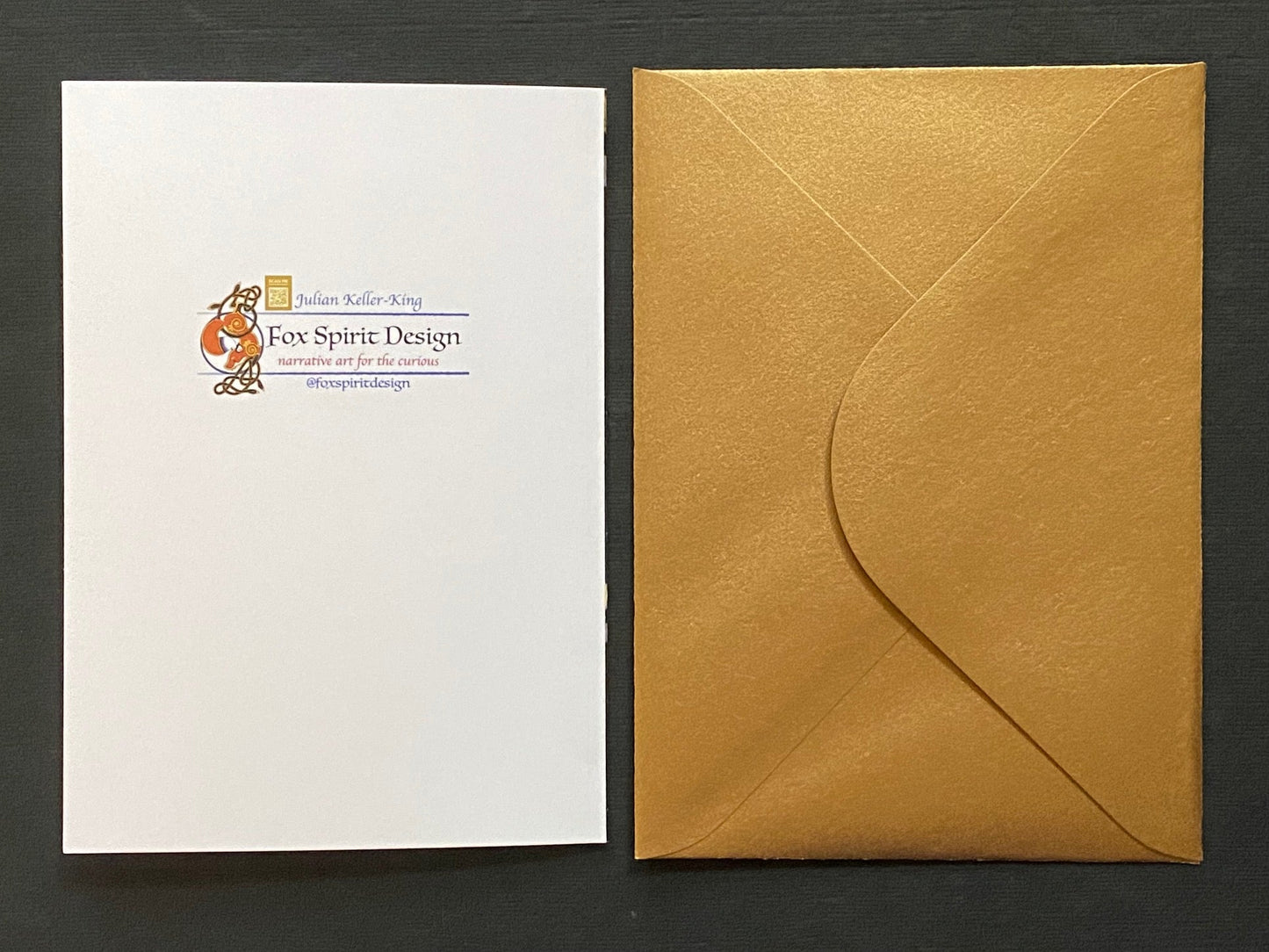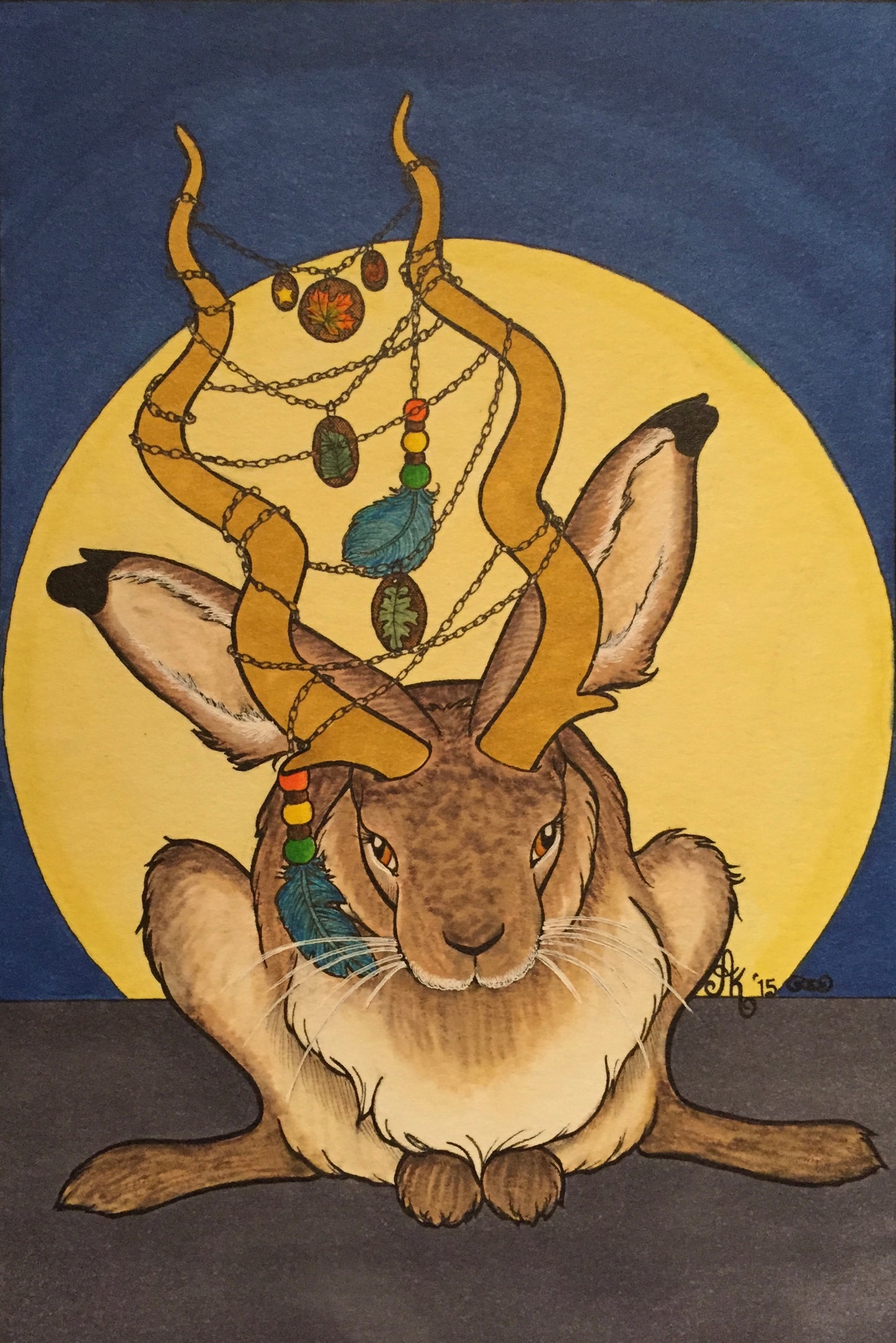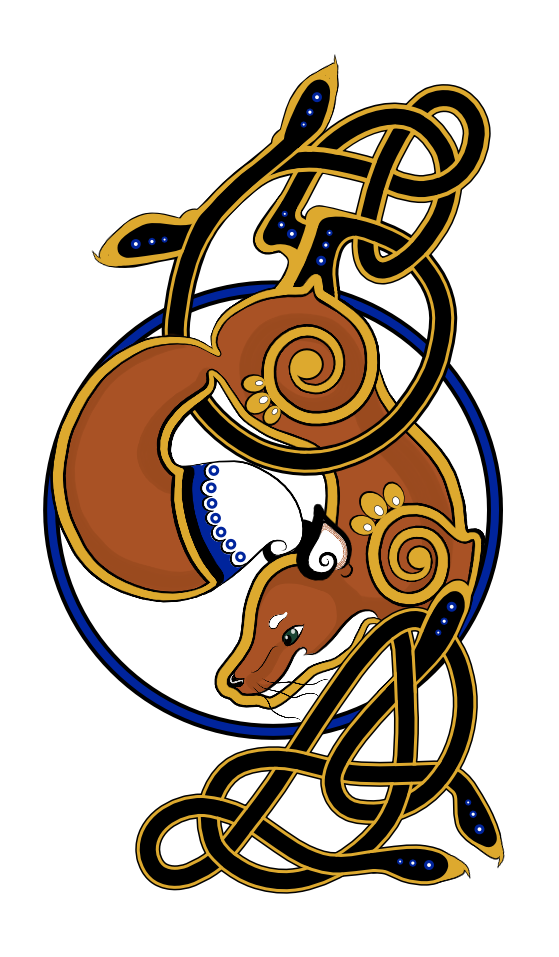
Jackalope Moon
magical things are most easily glimpsed by moonlight
9x12" / alcohol-based ink on bristol with origami paper background on lightweight panel
Jackalope Moon

a search for American (non-indigenous) creature myths that sparked my imagination; a lot are either too patently ridiculous or too inherently problematic for me to want to spend my time on.
jackalopes have mythological “cousins” (like the volpertinger of Germany) all over the world, variations on the idea of a rabbit or hare with horns or antlers of some kind, occasionally also paired with additional features like wings or fangs or the tail of a snake.
in American lore, they rose to prominence during the days of European explorations westward, as people going to lands they knew next to nothing about used newly-established postal services to send letters home to those they’d left behind, and whom they typically expected not to see again for several years, if ever. I love the jackalope because it captures so many facets of a moment in time: the tall-tales culture flourishing in work camps among labourers who came from a wide variety of backgrounds, thrown together in little social bubbles separated from most larger population centers. The collision of old-world legends with the imaginations of people who held a vision of reinventing themselves in a place they considered to be a new start. In perfect alignment with so many cultures who consider the rabbit to be a Trickster figure, the jackalope began as a tall-tale style practical joke played by those on the western frontier on those back home who were hungry for stories of the unseen marvels Out West. In all likelihood, it probably started as a sort of good-natured hazing for new arrivals to the frontier - credulous city-dwellers ready to believe anything out here could be real. Some people wrote home about these marvelous creatures. Others took it to the next step: they made mounts from the carcasses of jackrabbits and added antelope horns, displaying the finished products as “proof” of the jackalope’s existence. Although the hoax has long since been conceded, the creature itself lives on in our cultural imagination, still as mysterious and wonder-provoking as it ever was, sparking our desire to believe in things that are new, and strange, and wonderful.
Jackalopes, then, are a symbol of change, of intentional community, of the power of collective imagination to influence the fabric of our reality
—> and a little benign mischief, the importance of laughter and good humour in strengthening interpersonal relationships

Fox Spirit Design
Cards - Jackalope Moon
Share




Fox Spirit Design
Prints - Jackalope Moon
Share

